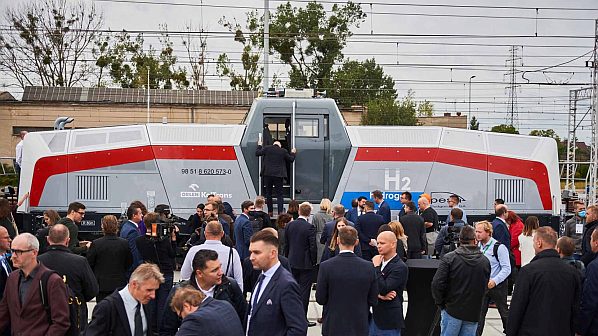PESA has unveiled its first hydrogen shunting locomotive at the Trako trade show in Gdansk, Poland.
The SM42 6Dn four-axle prototype locomotive is fitted with four 180kW traction motors and a zero-emission hydrogen drive. Two hydrogen cells manufactured by Ballard generate energy. Each cell produces 85kW and generates electricity in the chemical reaction of hydrogen with oxygen.
The locomotive’s hydrogen tanks have a 175kg capacity, and one refuelling period allows for a 24-hour shunting operation. It also has regenerative braking which feeds the 167.6kWh lithium-titanate-oxide traction batteries.
TSA and ABB supplied the traction equipment for the locomotive, which has been designed specifically for the Polish market. It is also fitted with an autonomous driving system that allows the driver to control the unit, and an obstacle recognition system.
After being displayed at Trako, the locomotive will undergo testing and research before entering service next year at a new oil refinery in Plock, central Poland. It will be operated by Polish freight operator Orlen Koltrans, a subsidiary of oil company PKN Orlen.
“This project is like a journey into the unknown for our entire team of several dozen,” says Mr Lech Lipiński, Pesa Bydgoszcz’s head of hydrogen vehicle projects.
The locomotive has been rebuilt using the underframe of an older SM42 diesel-electric unit, most of which dates from the 1970s and 80s. Pesa says the most important change is that the cab is now mounted centrally.
Pesa is developing its Regio160 platform which will include further low-emission vehicles including EMUs fitted with batteries or hydrogen fuel cells. The first hydrogen-powered Pesa passenger train is expected to be ready by the end of 2025 or the start of 2026. As part of the hydrogen vehicle project, Pesa has established a strategic cooperation with PKN Orlen and PKP, and Pesa expects to sign agreements with other partners soon as part of the roll-out of hydrogen trains.

